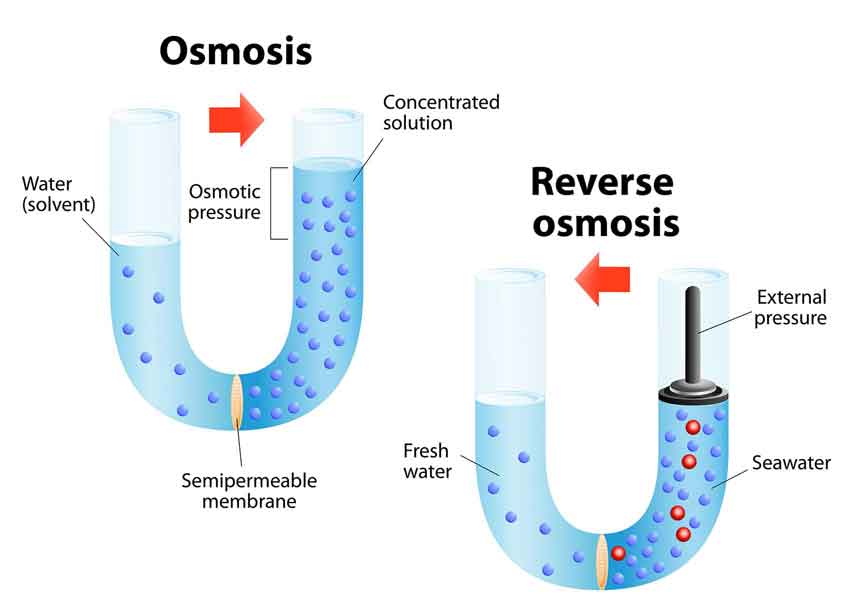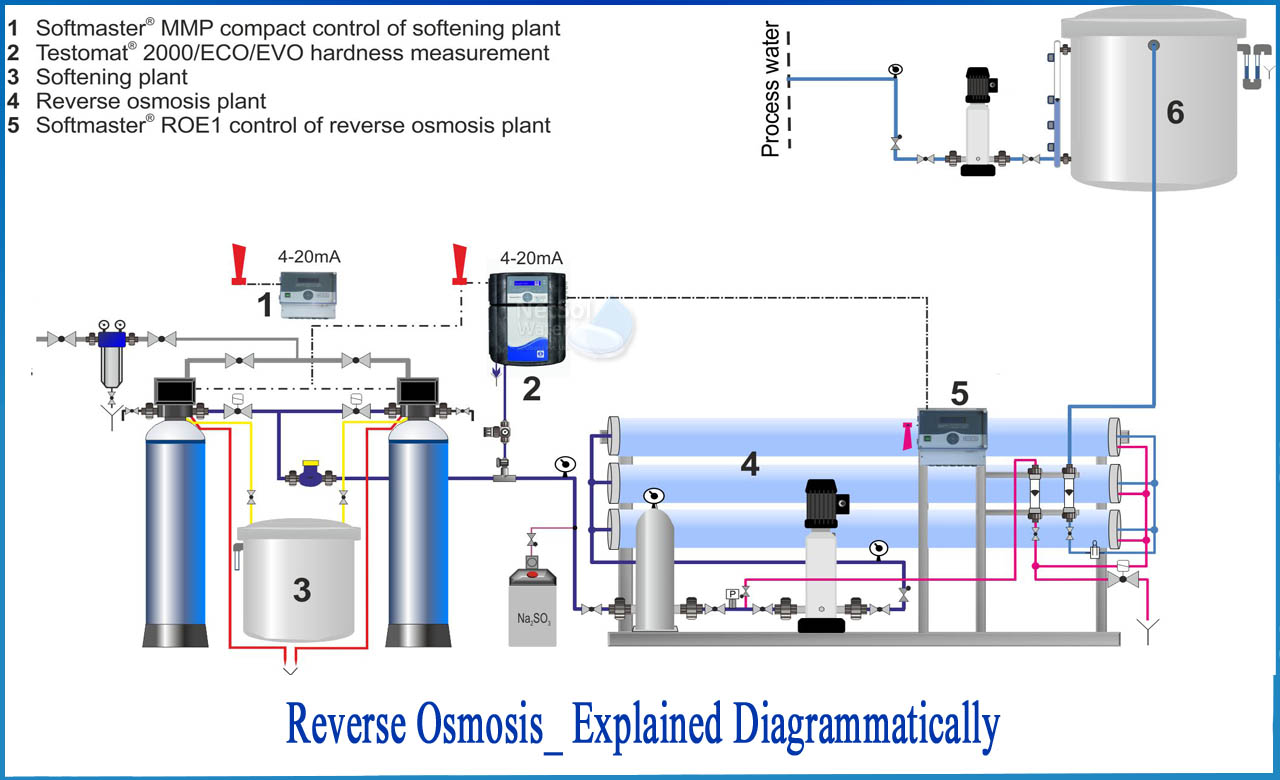Before going into the discussion of reverse osmosis, one should be fully aware about osmosis as both the processes are interrelated and its almost impossible to learn about reverse osmosis without having any prior knowledge about osmosis. So, here goes the discussion:
Osmosis is the process of water passing from a less concentrated solution to a more concentrated one through a semi-permeable membrane. To put it another way, the pure water flows through the filter and into the polluted water to equalise the concentrations, which is not what we want our drinking water to do.
In reverse osmosis, water is pushed from a high concentration of impurities to a low concentration of contaminants by using pressure to overcome osmotic pressure. This means the polluted water is attempting to enter the pure water, but because it must first pass through a filter, the contaminants are retained and only the pure water flows through, resulting in the cleanest possible drinking water — just what we want. Below shown figure explains the both processes in quite a good manner

Reverse osmosis finds its application in water treatment processes, which is the backbone of good health in these days. Since water quality is degrading day by day, one cannot rely on tap water especially for drinking purpose. Here the use of RO comes into picture. Now we will try to be familiar with the components of RO system along with the diagram which ultimately make polluted water fit for use
Five fundamental components make up a reverse osmosis system:
1-Membranes & Pressure Vessels
Without membrane elements, a reverse osmosis system would obviously fail. Membrane proteins differ based on the type of intake water and the clarity of the end product. Membranes for brackish water, seawater, hospital-grade disinfection, and membranes tailored to remove specific contaminants, to name a few, are all available. If there is a need for water treatment, you can be confident that a membrane element will be available.
2-Skid for Reverse Osmosis
A powder coated, carbon steel frame to mount all of your components on is the best way to make your reverse osmosis system as durable as possible. It's weatherproof, built to withstand the intense vibrations of high-pressure pumps, and mounted to the ground to assure a long life.
3-Filter Cartridge
A cartridge filter is included with most reverse osmosis water systems to ensure that no particles large enough to harm the membranes get near them. This cartridge is typically a five-micron spun polypropylene filter; however, it can be customised based on your needs. The cartridge is housed in a tough shell that can withstand the pressure generated by the main feed and booster pumps.
4-High-Pressure Reverse Osmosis Pump
The rejection rate of a reverse osmosis system isn't practicable in most commercial or industrial applications without a high-grade pump. It is critical for the system that the pump is properly matched to the membrane amount and size. The better the permeate rejection and recovery rates, the higher the horsepower on the intake pump.
5-Panel of Control
Finally, a human operator must operate the reverse osmosis system. Depending on how advanced the controls need to be, we use advanced PLCs or a solid-state microcontroller. The controls can also be utilised to manage many systems at the same time, thereby turning a single person into a water production plant.
A reverse osmosis system can have a variety of additional components placed onto or into it as well. For example, the entire skid can be put into a containerized system, allowing your desalination by RO System to be mobile. Below is the picture of Netsol’s commercial RO plant.



